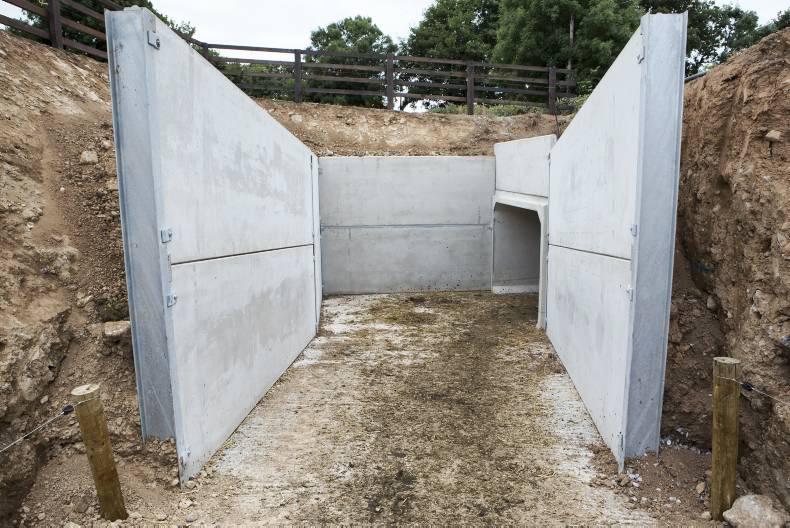One perk of my job is getting to see how building components are made. Some weeks ago, I watched pre-stressed wall panels being cast in Co Limerick.
I’ve previously showed wall panels being used to make the walls around a variety of structures – from cattle sheds to a silage pit. Now, let’s look at how they’re made.
Panels are used to make instant walls. They can be stood one on top of the other for height and are supported by an RSJ at each end.
Panels for farm use are typically 1m or 1.5m high, 100mm or 150mm thick and anything from 3m to 6m long. They can be significantly lower in cost than a wall that is shuttered and poured on site.
Picture one
This is one of two long beds in Croom Concrete used for moulding wall panels. This bed is 40m long, while the other, at the far side of this shed, is 55m. The side walls of this mould can be adjusted to make panels of different heights. The blue-coloured cross bars are adjusted in one direction or the other to make longer or shorter panels.
We can see the reinforcing wires already in place and tensioned, ahead of concrete being poured. It is the tensioning of these wires that give panels their strength. They are 9.3mm in diameter and stranded – a wire rope. It comes in a 3,000m roll.
Croom’s Joe Costello told me that the wires must be “slat neutral”, ie the same number above and below. “Otherwise, the panel will bow as the pull will not be equal,” he said.
Stretching of the wires is carried out by large hydraulic rams at one end of the bed, one ram at each side. For each 1m of length, the wire rope is “jacked” by 6mm. So for this 40m bed, the wires will be jacked 240mm (almost 10in).
Picture two
The blue cross bars are used to set the length of panels. After the panel has hardened, the lid is lifted off these bars and the reinforcing wires underneath cut with an angle grinder, separating each panel.
Picture three
The firm keeps two concrete lorries in the yard for filling the two panel beds. The 80N strength concrete is poured in. It is vibrated with a high frequency poker vibrator.
Picture four
This rapidly brings the air bubbles to the surface.
Picture five
The mould is topped up again and then screeded level by hand with a simple flat bar, rubbed from side to side in an old fashioned way. The concrete is then bull-floated to give it a smooth finish.
Once the concrete is poured, it is heated so as to achieve strength quickly. It has reached 40N after just 24 hours and, at this point, the wire rope can be released at the end of the long bed and the blockers between each panel are lifted.
The panels are then lifted out of the beds using a suction lifter on a forklift. They are stacked and left to achieve full strength.
A sample of concrete is taken from each batch and undergoes a cube test. Each sample is numbered and the corresponding number is stamped on the precast panel. This gives traceability.
All Croom panels are CE-certified and manufactured in accordance with EN 14992.
The Limerick firm can adjust the length of its panels to order and each one will be individually labelled, making them easy to identify when installing.






 This is a subscriber-only article
This is a subscriber-only article










SHARING OPTIONS: